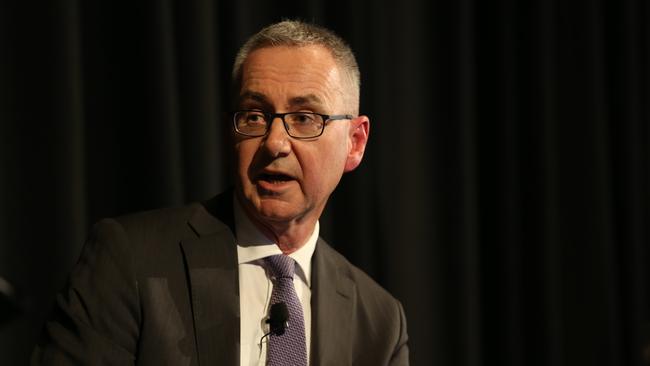Top regulators support APRA‘s stand on mortgage buffers
Top financial regulators have backed APRA’s decision to maintain stringent criteria for captive home loan borrowers, citing rising risks and uncertainty.

Top financial regulators have recognised borrowers are finding it increasingly difficult to refinance their mortgages, but backed the banking watchdog’s decision not to lower the bar borrowers trapped in so-called “mortgage prison” must meet before they can get a new loan.
Their support follows a letter by the Australian Prudential Regulation Authority last week that reminded banks of the importance of maintaining interest rate buffers for borrowers in a climate of soaring loan costs and high inflation.
Analysts estimate that close to 20 per cent of all home loan borrowers are captive with their lenders because of APRA’s requirement that banks not offer mortgages to borrowers that can’t repay a loan with a hypothetical interest rate 3 percentage points above the loan’s actual interest charge.
On Wednesday, the Council of Financial Regulators – formed by officials from the Reserve Bank, APRA, ASIC, and Treasury – said the rules were appropriate given the economic uncertainty from an acceleration of base interest rates to control stubbornly high inflation.
“Members supported APRA’s assessment that the serviceability buffer – currently set at 3 per cent – remains at the appropriate level given the current environment, including the high degree of uncertainty and risks to the economic outlook,” the CFR said in its quarterly statement.
The macroprudential rule means that borrowers seeking a mortgage with an interest rate of 6 per cent would have to show their income is sufficient to repay the loan as if it carried a 9 per cent interest rate.
The support came even when the council acknowledged “some households are experiencing significant pressure on their finances, including those on lower incomes (including many renters) and those with low savings buffers and high levels of debt relative to their income,” the statement said.
Housing and business loans in arrears were also rising “a little” from low levels, “as economic conditions have become more challenging,” it added.
The council noted, however, that the serviceability criteria has exceptions and highlighted that APRA “expects that banks will set prudent limits for their exceptions to lending policy and monitor such lending closely,” it said.
Last month, APRA said Australia’s banks were aiming to approve around 6 to 7 per cent of the flow of refinancings from so-called “mortgage prisoners” who do not meet the banking regulator’s serviceability buffer.
“APRA would continue to assess the appropriateness of macroprudential policy settings as economic and financial conditions evolve,” the CFR’s statement said.
Westpac and non-bank lender Resimac have been two of the most vocal and clear lenders about their exception policies, with the latter reducing its serviceability test to two per cent.
Westpac and its subsidiaries St George, Bank of Melbourne and BankSA allow some borrowers seeking to refinance their loans to be tested under a “modified serviceability assessment rate” if they don’t pass the standard requirement. To be eligible, borrowers need good repayment histories and a credit score of 650 or more.
In its quarterly statement, the financial regulatory quartet also said the most aggressive monetary policy tightening in a generation was yet to flow through to the economy, providing cover for the central bank to continue to hike interest rates in the months ahead.
“Most households are well-placed to manage the impact on budgets due to strong labour market conditions and sizeable saving buffers,” the statement said.
Even fixed-rate borrowers who were transitioning to loans carrying interest rates a lot higher than only a year ago, have, to date, generally managed the transition to higher interest rates at the end of their fixed term.”
Earlier this month, the RBA surprised many when it hit borrowers with the 12th interest rate increase in just over a year, leaving the cash rate at 4.10 per cent.
Many economists now expect the RBA will increase the cash rate to 4.35 per cent in July after governor Philip Lowe said he had become more worried that inflation could prove harder to tame than previously thought.






To join the conversation, please log in. Don't have an account? Register
Join the conversation, you are commenting as Logout